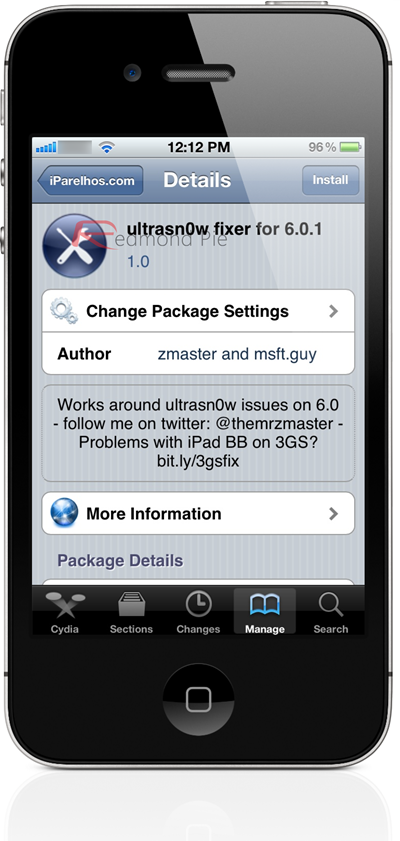Ultrasn0w fixer has been updated for support on those running the
marginally-tweaked iOS 6.0.1, released by Apple a few days ago. So those
of you looking to maintain the carrier unlock you’ve treasured for so
long can now do so on the very latest firmware.
In all honesty, the list of improvements noted in the iOS 6.0.1 change log amount to very little, so if you’re a long-time Ultrasn0w user and accustomed to continually jumping through hoops when you update your firmware, you may want to skip iOS 6.0.1 altogether and wait for an update with a little more to it. With that said, bug fixes are bug fixes, and if you’re conscious about keeping everything up to date, you’ll be able to maintain your unlock by following the usual tutorial that we posted to unlock iOS 6. The procedure is exactly the same so there is no need redo a guide for it.

In an ideal world, carrier-locked devices would not exist. Whilst it allows mobile networks to exercise a certain amount of control over consumers, it brings no real benefit to you and I, and as such, many of us find ourselves looking for unlocking solutions.
The easiest way to unlock an iPhone is to arrange for the carrier to do so. Often, they charge a small fee, and when your contract has finally run its course, some will even do it for free. An unlock through the carrier gives you free reign – your device is about as unlocked as if you had bought it that way directly from Apple. Unfortunately, this is not always a viable option, but in the jailbreak community, many of the limitations and issues faced by the everyday user are countered in one way or another.

In the early days of iOS, it was all about Ultrasn0w. A simple software solution through Cydia, a quick download and device reboot later, and you could slip any SIM you wanted into your iPhone. Times have changed now though, and the software-based unlock does not work for those running on newer hardware. Only the few having preserved their old and unlockable basebands can still use Ultrasn0w, but with the updates still arriving, the once-widespread tool is certainly not in danger of dying out anytime soon.
In all honesty, the list of improvements noted in the iOS 6.0.1 change log amount to very little, so if you’re a long-time Ultrasn0w user and accustomed to continually jumping through hoops when you update your firmware, you may want to skip iOS 6.0.1 altogether and wait for an update with a little more to it. With that said, bug fixes are bug fixes, and if you’re conscious about keeping everything up to date, you’ll be able to maintain your unlock by following the usual tutorial that we posted to unlock iOS 6. The procedure is exactly the same so there is no need redo a guide for it.

In an ideal world, carrier-locked devices would not exist. Whilst it allows mobile networks to exercise a certain amount of control over consumers, it brings no real benefit to you and I, and as such, many of us find ourselves looking for unlocking solutions.
The easiest way to unlock an iPhone is to arrange for the carrier to do so. Often, they charge a small fee, and when your contract has finally run its course, some will even do it for free. An unlock through the carrier gives you free reign – your device is about as unlocked as if you had bought it that way directly from Apple. Unfortunately, this is not always a viable option, but in the jailbreak community, many of the limitations and issues faced by the everyday user are countered in one way or another.

In the early days of iOS, it was all about Ultrasn0w. A simple software solution through Cydia, a quick download and device reboot later, and you could slip any SIM you wanted into your iPhone. Times have changed now though, and the software-based unlock does not work for those running on newer hardware. Only the few having preserved their old and unlockable basebands can still use Ultrasn0w, but with the updates still arriving, the once-widespread tool is certainly not in danger of dying out anytime soon.

No comments:
Post a Comment